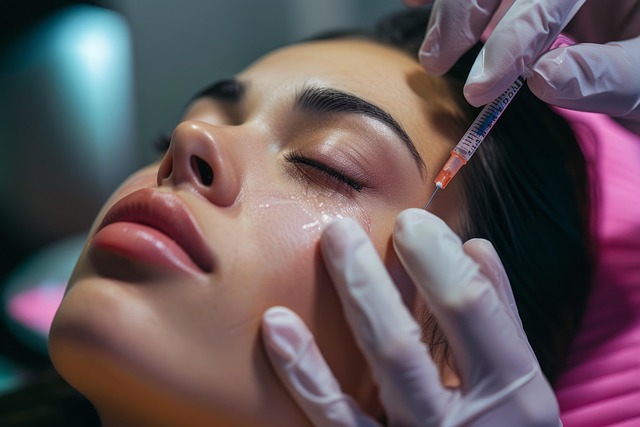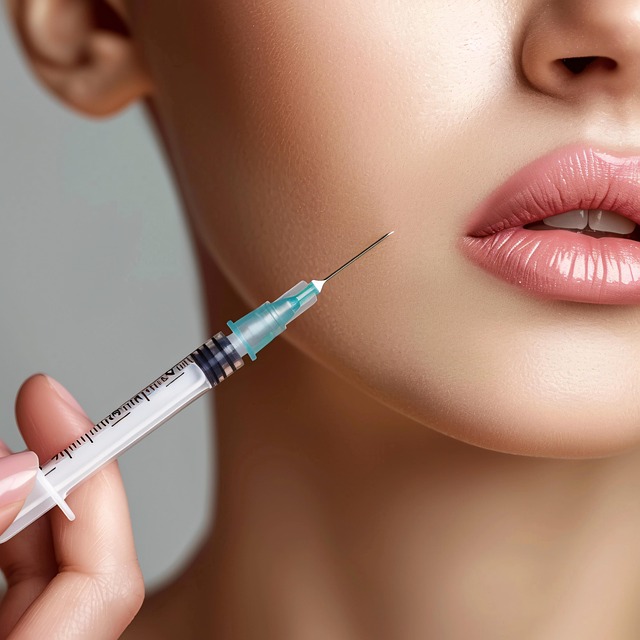Botox and dermal fillers are popular anti-aging treatments with distinct approaches. Botox, derived from bacteria, temporarily paralyzes muscles to smooth wrinkles, while dermal fillers enhance volume using hyaluronic acid. Botox is ideal for subtle results and preventing wrinkle formation, while dermal fillers offer immediate volume restoration for dramatic enhancements. Selection depends on personal preference, desired outcomes, and skin type. Early adoption of Botox can significantly alter cosmetic paths towards longevity, offering a strategic, long-term method with fewer touch-ups than dermal fillers. Safety, effectiveness, and post-treatment care are crucial when considering Botox or dermal filler treatments, requiring qualified professionals and personalized aftercare advice. The future of preventative Botox care is bright, integrating with dermal fillers for comprehensive anti-aging solutions and longer-lasting formulations.
“Unveil the secrets to achieving youthful, radiant skin with Professional Preventative Botox Care. In this comprehensive guide, we delve into the world of aesthetic treatments, focusing on Botox and its competitive counterpart, dermal fillers. Understanding their unique roles in skincare routines is key. Early intervention with Botox offers long-lasting results, making it a popular choice for those seeking prevention. We explore safety, effectiveness, and post-treatment care tips to ensure optimal outcomes. Additionally, discover future trends shaping preventative Botox treatments, as we stay ahead in the quest for youthful beauty. Uncover the advantages of Botox vs. dermal fillers and take control of your skincare journey.”
Understanding Botox and Dermal Fillers: A Comprehensive Comparison

Botox and dermal fillers are two popular cosmetic treatments, often used for anti-aging purposes, but they work in different ways. Botox, a protein derived from bacteria, temporarily paralyzes muscles, reducing the appearance of wrinkles caused by repeated contractions. On the other hand, dermal fillers enhance volume and elasticity by injecting a substance into the skin, typically hyaluronic acid. While both aim to reverse signs of aging, their effects and application differ significantly.
When considering Botox vs dermal fillers, understanding these differences is crucial. Botox offers a non-invasive way to prevent wrinkles from forming, making it ideal for people looking for a subtle, natural result. Dermal fillers, however, provide immediate volume restoration, making them more suitable for those seeking dramatic improvements in facial contours. The choice between the two depends on personal preferences, desired outcomes, and individual skin types.
The Role of Botox in Preventative Skincare Routine

In the realm of preventative skincare, Botox has emerged as a game-changer, offering a unique approach to combating signs of aging. Unlike dermal fillers that focus on adding volume and plumping effects, Botox works by relaxing muscles, preventing dynamic wrinkle formation. This makes it an ideal choice for those seeking to maintain a youthful appearance by slowing down the visible effects of age.
When incorporated into a regular skincare routine, Botox treatments can provide long-lasting results, reducing the need for frequent top-ups compared to fillers. It’s a strategic approach to anti-aging that targets problem areas specific to individual concerns, be it forehead creases, crow’s feet, or frown lines. This tailored method makes Botox an attractive option in the beauty industry, standing out from dermal fillers as a proactive solution for preventative skincare.
Benefits of Early Intervention with Botox for Long-Lasting Results

Early intervention with Botox can be a game-changer for those seeking long-lasting results in their cosmetic journey. Unlike dermal fillers, which offer immediate but temporary solutions, Botox provides a more gradual and sustained approach to anti-aging. When administered by a professional, Botox injections can effectively prevent the formation of fine lines and wrinkles, especially in areas like the forehead, crow’s feet, and frown lines. This preventative care is particularly beneficial for folks who want to avoid extensive treatments later on.
By starting early, individuals can maintain a youthful appearance for more extended periods, reducing the need for frequent touch-ups compared to dermal fillers. Botox’s ability to relax muscle activity under the skin prevents dynamic wrinkles from deepening, resulting in a more relaxed and rejuvenated look. This long-term strategy is cost-effective and ensures that folks stay satisfied with their results, fostering a positive self-image without the worry of excessive procedures.
Safety and Effectiveness: Ensuring Quality Care from Qualified Professionals

When considering preventative Botox care, it’s paramount to prioritize safety and effectiveness. Unlike dermal fillers, which can lead to more immediate yet undesirable results if not administered correctly, Botox offers a subtler approach to anti-aging. The key to ensuring positive outcomes with Botox lies in the hands of qualified professionals who understand its mechanics and potential side effects.
Choosing practitioners with extensive experience in Botox treatments is crucial. These experts know how to inject precisely, minimizing risks and maximizing results. Moreover, they can guide patients on expectations, post-treatment care, and the differences between Botox and dermal fillers to make informed decisions tailored to their skin’s unique needs.
Post-Treatment Care: Tips for Optimal Recovery and Results

After your Botox or dermal filler treatment, proper post-care is essential for optimal results and to reduce potential side effects. Here are some tips to enhance your recovery process. Firstly, stay hydrated by drinking plenty of water; this aids in skin healing and prevents dryness, a common side effect of these procedures. Avoid strenuous exercise for the first 24 hours, as it can increase blood flow and potentially disrupt the treatment’s results.
In terms of skincare, gentle cleaning and avoiding aggressive products are key. Use a mild cleanser and avoid any harsh chemicals or exfoliants for at least a week post-treatment. Protect your skin from the sun; always apply sunscreen with a high SPF to shield against potential hyperpigmentation. Note that Botox and dermal fillers differ in recovery times and effects, so follow specific aftercare instructions provided by your dermatologist or aesthetics professional.
Future Trends in Preventative Botox Treatments

The future of preventative Botox care looks promising, with advancements in technology and a growing understanding of aesthetics. One notable trend is the integration of Botox with other cosmetic treatments, such as dermal fillers, to offer comprehensive anti-aging solutions. While Botox is renowned for its ability to smooth fine lines and wrinkles by relaxing muscles, dermal fillers enhance volume loss and add structure. Combining these two treatments allows professionals to tailor care to individual needs, addressing both dynamic and static signs of aging simultaneously.
Additionally, the development of more advanced, longer-lasting Botox formulations is on the horizon. Current trends suggest a shift towards treatments that provide sustained results without requiring frequent injections. This not only saves time and money for patients but also reduces the frequency of visits for professionals, allowing them to focus on other aspects of skincare and patient education. As technology evolves, we can expect preventative Botox care to become increasingly personalized and efficient.
